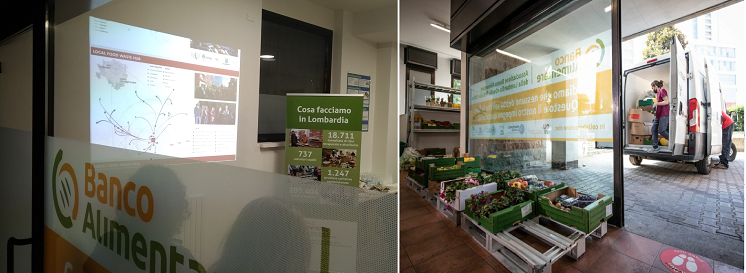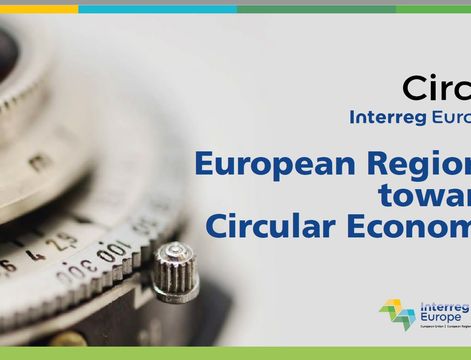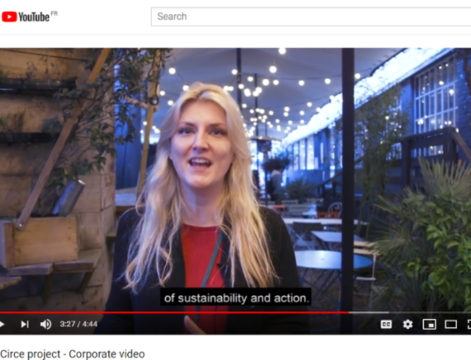The marble mud discarded from Orosei quarries will be used to make tires, paints and building materials. This is the outcome of research conducted by the University of Cagliari, Department of Civil, Environmental Engineering and Architecture (DICAAr) titled “Reduction of marble waste landfills through the enhancement of CaCO3” financed by the Sardinia Region.
 The purpose of the study, begun in 2015 and not yet concluded, was to answer the question “what can we do to recoup and reuse waste (stone dust) deriving from both quarry and processing plant work, and use it to make high-added-value products while at the same time lessening the amount of material to be dumped?” “Until now the preferred way to get rid of work mud and dust was to dump them”, said professor Nicola Careddu, head of the research project, since they were considered products unusable in any other production cycle.
The purpose of the study, begun in 2015 and not yet concluded, was to answer the question “what can we do to recoup and reuse waste (stone dust) deriving from both quarry and processing plant work, and use it to make high-added-value products while at the same time lessening the amount of material to be dumped?” “Until now the preferred way to get rid of work mud and dust was to dump them”, said professor Nicola Careddu, head of the research project, since they were considered products unusable in any other production cycle.
Today this is no longer compatible with the sustainable development concept. Many advanced countries are working towards a circular economy that aims to preserve resources by valorizing the existent, perhaps currently discarded, rather than buying new ones.
 The research. “We tried using stone-working scraps in various fields”, said engineer Graziella Marras, a DICAAr researcher. “Initially we concentrated on different building sector because, we thought, construction utilizes great quantities of materials and so it was possible to discard them more rapidly. Then we refined the research to more specific sectors”. In building, stone dust was used as an additive, as a compound not present in the basic material. “An addition that brought satisfying results”, the researcher went on to say. “For example, for brick we showed that by adding calcium carbonate (the principal material comprising the marble in Orosei quarries) it is possible to improve the imbibition coefficient, reducing the amount of water that bricks absorb. For concrete, when a percentage of cement was replaced with calcium carbonate, the values for compression resistance were somewhat higher than in the original material. And for gypsum-based plaster, when a percentage of calcium carbonate replaced the original material there was an improvement in both breakage under flexural and under compression along with better adherence to the support. In these fields, however, stoneworking scraps are considered ‘poor’ materials and underpriced”.
The research. “We tried using stone-working scraps in various fields”, said engineer Graziella Marras, a DICAAr researcher. “Initially we concentrated on different building sector because, we thought, construction utilizes great quantities of materials and so it was possible to discard them more rapidly. Then we refined the research to more specific sectors”. In building, stone dust was used as an additive, as a compound not present in the basic material. “An addition that brought satisfying results”, the researcher went on to say. “For example, for brick we showed that by adding calcium carbonate (the principal material comprising the marble in Orosei quarries) it is possible to improve the imbibition coefficient, reducing the amount of water that bricks absorb. For concrete, when a percentage of cement was replaced with calcium carbonate, the values for compression resistance were somewhat higher than in the original material. And for gypsum-based plaster, when a percentage of calcium carbonate replaced the original material there was an improvement in both breakage under flexural and under compression along with better adherence to the support. In these fields, however, stoneworking scraps are considered ‘poor’ materials and underpriced”.
A change of perspective for valorizing calcium carbonate from the economic standpoint came with its use in specific sectors. “We broadened and refined our research to sectors in which calcium carbonate is used in smaller amounts but more importantly”, said the researcher, “in economic terms. That is, in sectors where the chemical compound is used as a micronized element, or in other words as a tiny aggregate, best known as filler”. The calcium carbonate from the Orosei marble quarries is 98% pure and in general already micronized if you consider marble mud a type of discard. “A grinding similar to that obtained from the same carbonate rocks by means of micronizing”, she added, “and so we tried using marble mud in the sectors where it is already normally used, such as in tire- and paintmaking”.
 Laboratory test results emphasized how this addition improved the hardness and traction of rubber that is vulcanized – the process that serves to create all the specific bonds of tire structure. The study also showed that mixtures using carbonate muds achieve maximum vulcanization faster than those using traditional calcium carbonate. “Generally speaking, using these mixtures would create more resistant tires”, Ms. Marras concluded. “Naturally, at present this is only an hypothesis because the research has not delved into this aspect. However, this mixture could be used in production chains for tires and be tested to verify the results obtained and compare them with those for the mixture. This is because there could be other factors, not tested, that could interfere with the results obtained”. Where paint is concerned, the research focused on the type of washable white wall paint where calcium carbonate also serves a supporting function because it accounts for some 60% of the paint’s composition. “Here, too, replacing filler with marble mud increased “luminescence” by some 2 percent, bringing it to about 96%. This makes the paint whiter when applied and its coverage and water-resistance are greater than what is obtained with commercial CaCO3”.
Laboratory test results emphasized how this addition improved the hardness and traction of rubber that is vulcanized – the process that serves to create all the specific bonds of tire structure. The study also showed that mixtures using carbonate muds achieve maximum vulcanization faster than those using traditional calcium carbonate. “Generally speaking, using these mixtures would create more resistant tires”, Ms. Marras concluded. “Naturally, at present this is only an hypothesis because the research has not delved into this aspect. However, this mixture could be used in production chains for tires and be tested to verify the results obtained and compare them with those for the mixture. This is because there could be other factors, not tested, that could interfere with the results obtained”. Where paint is concerned, the research focused on the type of washable white wall paint where calcium carbonate also serves a supporting function because it accounts for some 60% of the paint’s composition. “Here, too, replacing filler with marble mud increased “luminescence” by some 2 percent, bringing it to about 96%. This makes the paint whiter when applied and its coverage and water-resistance are greater than what is obtained with commercial CaCO3”.
The study is still underway and its more than positive preliminary results are very promising for its final outcome.

The article is also been published in MARMOMACCHINE Magazine, Ed. n. 259 – Ott-Nov. 2018.
Author: Alessandro Ligas











